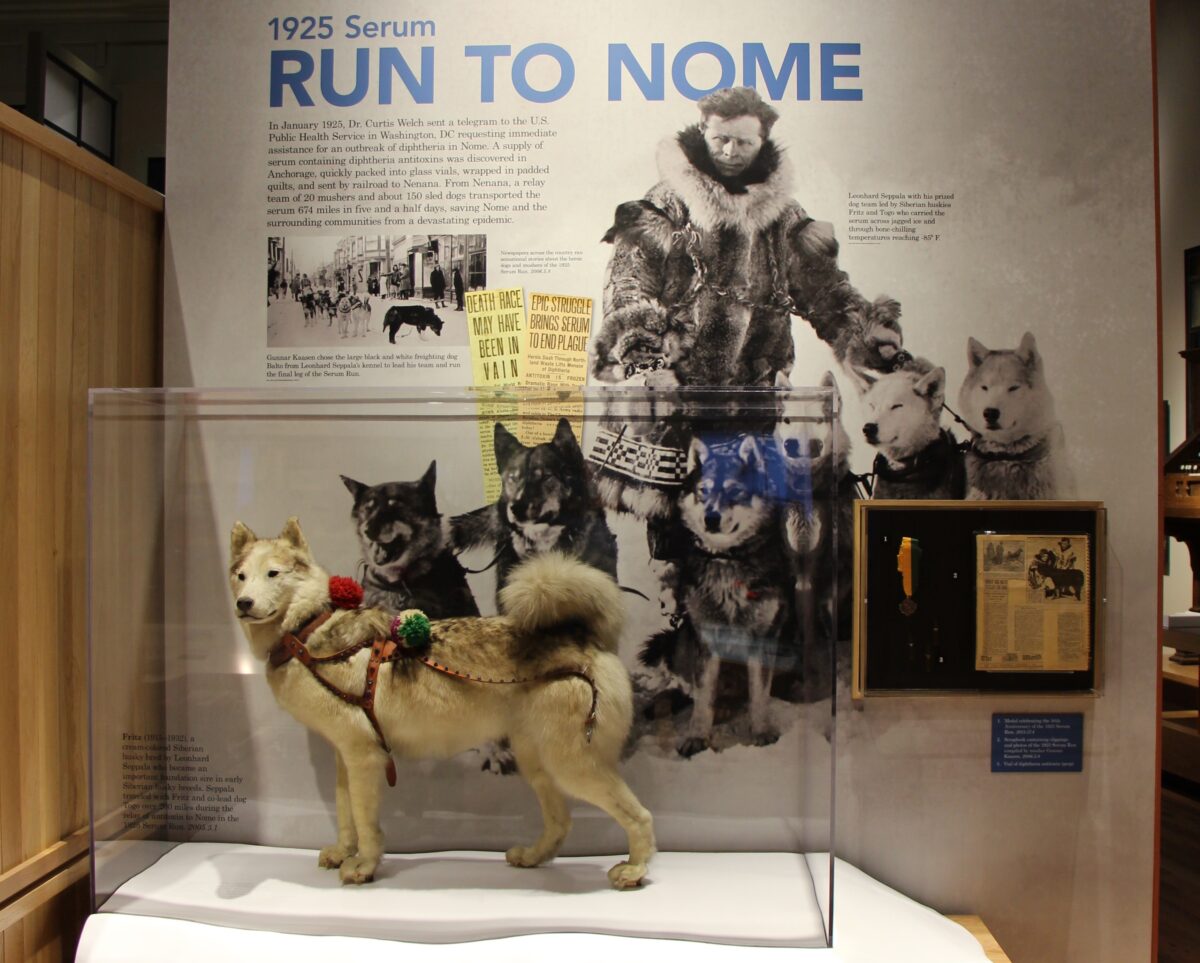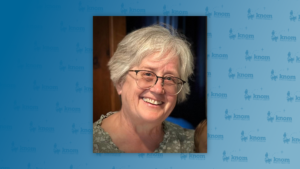The Serum Run Expedition, which is tracing the steps of the 1925 quest to get medicine to Nome, reached Koyuk last night. They are planning to be in Elim Monday night. By late Thursday morning, they hope to be in Nome.
Nome musher Stephanie Johnson hopes to keep up their lucky streak – but admits that crossing the Norton Sound was a little chilly.
“We definitely have some positive vibes following us along this trail because we literally have had amazing weather for the most part. … Even with the forty below temperatures we had on the Yukon I think last night was the first night I said, ‘Man, I am really cold.’”
Stephanie Johnson
She blames the famous winds of the Norton Sound for that.
She says the trails have been good for mushers: In the stretch from Unalakleet to Shaktoolik and Koyuk, they even had the luxury of following snowmachine trails. Those were created late last week by sports fans traveling to Unalakleet for the regional Bering Sea Conference Basketball Tournament.

The sea ice, though, is a very different kind of trail from what the expedition has traveled so far. For Massachusetts musher Marla BB, it was a completely new experience from the moment they left Unalakleet.
“Ee were on glare ice, and I was the first musher out, so there wasn’t any scent for the dogs. They just have to follow the trail: it’s there and then it’s not there… they were looking at me like, ‘Really, Mom?’ and I was like, ‘Really!’”
The 2020 Serum Run Expeditioners have had good weather. In the original run of 1925, Leonhard Seppala crossed the Norton Sound in a brutal storm.
Serum run historians, Gay and Laney Salisbury, write in their book, The Cruelest Miles, that by the time the Serum reached the coast, the situation in Nome was growing desperate. Nome doctor, Curtis Welch, wrote that all government nurses outside of Nome were to stay at their stations for fear that the disease should spread beyond the city. Reporters wrote that the streets were deserted. The mayor urged people to keep the phones lines clear for emergency calls only. Nome’s hope was in the dogs.
Seppala made a risky choice in 1925. Even though he knew there was a chance the ice could break in the storm, he decided to cross the Norton Sound anyway.
It was dark, Seppala was driving the wind in his face. It may have been as cold as 85 degrees below zero. Suddenly, his lead dog Togo stopped and jumped around to face the team. Seppala was outraged that the dog would act up at a time like this, but then he saw it: The ice broke. Togo was warning the team. They were stuck on an ice floe in the Norton Sound. The only thing that Seppala and his dogs could do was wait for the wind to push them back towards shore.
Several hours later, their luck changed. The floe drifted toward the shore-fast ice. In one area, they were only five feet away. Seppala decided he would let his towline out and throw Togo to the shore-fast ice. He could only hope that the dog would understand and pull the rest of the team to shore.
It worked. Togo landed on the shore-fast ice and begins to pull. But then the unthinkable happens, the line snapped, separating lead dog from team. Seppala must have thought he would die. Gay and Laney Salisbury write that sled dogs like Togo have something called “adaptive intelligence”: they are bred to understand that their highest reward is to be with the master and team. So when the line snapped, Togo grabbed onto it. His sled dog instincts recognized that was the only way he could stay with his team. Togo pulled the team close enough to the ice where they coulf jump from the floe. Seppala and the team were saved, and so was the serum.
In the 95 years since Seppala made that crossing, the bond between musher and lead dog hasn’t changed.
At least, it hasn’t for Marla BB and her lead dog, Trixie.
“It’s almost just in their DNA that they just know where to go.”
BB says she has absolute trust in her dogs – on the trail that is.
“And she’s my littlest dog with the biggest attitude, Trixie. And in town she has figured out that there are other dogs around every house. So she’s a bit of a problem now getting her in and out of town.”
Despite being a bit mischievous on occasion, the dogs are having an easier time than the snowmachiners. That isn’t the fault of the drivers, but the deep snow. According to Iditarod officials, the depth of the snow is “unprecedented,” and for heavy snowmachines that’s a huge challenge. Nome musher Stephanie Johnson reported that the expedition veterinarian, Gil Van Scriver, had her machine catch fire on the Norton Sound and had to be towed to Koyuk. However, there are no reported injuries from that incident.
The GPS tracker is not working, but the expedition plans on being in Elim tonight after the vet clinic in Koyuk is finished. While Johnson is enjoying the expedition greatly, after over two weeks on the trail, they are all getting tired. They’ve been glad for the extra help in communities like Shaktoolik.
“All the kids came out and met us when we came in… and helping us hook up.”
Youthful hands and energy go a long way, says Johnson.
Listen for more updates on the Expedition on KNOM on Wednesday. We’ll hear more from the Serum Run trail and hear more about Seppala’s famous voyage.
Image at top: A display featuring Leonhard Seppala’s lead dog, Fritz, with artifacts, newspaper clippings, and photographs on the 1925 Serum Run. Photo: Amy Phillips-Chan, used with permission.





